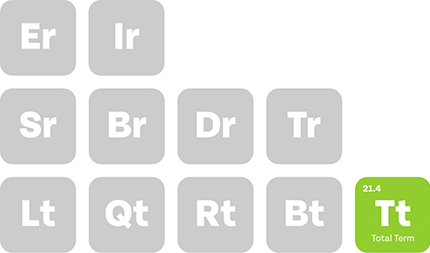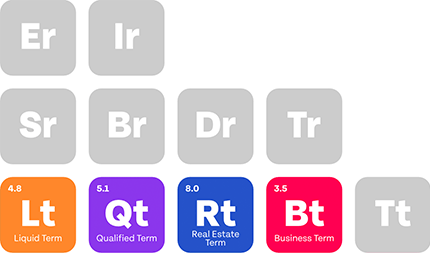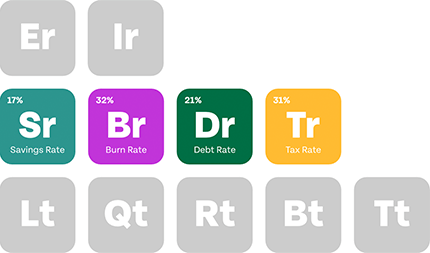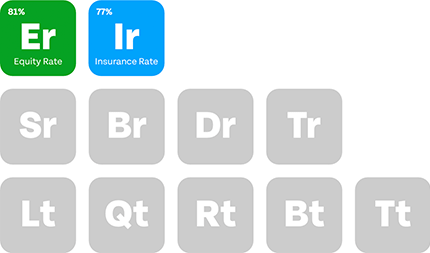Homeownership is a dream for many, with more than 85% of home tenants in the United States expressing that desire.
Many aspiring homeowners need a mortgage to purchase a home, and mortgage pre-approval is often a necessary part of acquiring a mortgage.
If you’re navigating the homebuying process for the first time, pre-approvals might seem confusing.
To help you, this guide will explore mortgage pre-approvals, explaining what they are, why you may want one, and how to acquire it.
Key Takeaways
- Mortgage pre-approval determines your borrowing power and proves buyer seriousness.
- Pre-approval differs from prequalification, offering a detailed financial evaluation.
- Strong credit, financial documents, and low debt-to-income ratios improve pre-approval chances.
- Pre-approval simplifies budgeting and speeds up the homebuying and mortgage processes.
Table of Contents
What Is a Mortgage Pre-Approval?
Most lenders require mortgage pre-approval before allowing a mortgage loan on a property you don’t own yet.
A lender will look at specific criteria to determine your interest rate and loan amount.
The criteria lenders focus on include your credit score, your financial history, and your debt-to-income rate.
Pre-approval tells a lender how much value of the house you can afford.
It recognizes your creditworthiness so you can continue on the road to owning a home.
You’ll have all the pertinent information sent to you in a preapproval letter.
Mortgage Pre-Approvals vs. Prequalifications: How They’re Different
Throughout the homebuying process, you might also hear of mortgage prequalification.
Although these might sound similar, being prequalified and preapproved are two different things, even if they’re both guiding you toward the same goal.
If you’re prequalified, it means you’re only getting an informal estimate on your borrowing amount.
The reason the estimate is informal is because all financial information is self-reported.
There’s no one plumbing the depths of your financial history as when you’re preapproved for a mortgage.
You can choose to share your pay stubs and other financial documents.
Prequalification can help you with budgeting and even with making an offer, but you should still be preapproved for a mortgage if you want to be perceived as a serious buyer.
The Benefits of Mortgage Pre-Approvals
Is it really worth your while to seek a mortgage pre-approval? Indeed it is, for these reasons:
It Hastens the Buying Process
Buying a home is rarely an overnight process, but it can go fast, especially for some highly sought-after properties.
A pre-approval letter makes it easier and more efficient to apply for a mortgage. Plus, the approval process will also go quicker.
In other words, you’ll be in the clear sooner to place your offer and hopefully become the owner of a home.
Proves Your Legitimacy
The home market is flooded, but not everyone is serious about potential purchases.
Since it’s currently still a seller’s market, you need every advantage you can get to prove that you intend to buy a home and start the next chapter of your life.
You can establish yourself as a serious buyer with a pre-approval letter.
Having the letter proves that you were willing to do the legwork to begin the home loan process.
Helps You Plan a Budget
Since a mortgage pre-approval indicates how much of the house value you can afford, it’s a valuable tool for budgeting, even more so than prequalifications.
Remember, the difference is that pre-approval requires a lender to look at your credit history, pay stubs, and other financial information.
You’ll get a more accurate budget you can use toward making a down payment.
Assists When Making Offers
Although a mortgage pre-approval doesn’t directly help with offers, you can make an offer with more confidence once you’re preapproved for a mortgage.
You’ll know what you can afford to spend so you make offers within your financial means.
What Do You Need To Get Pre-Approved?
Ultimately, the decision of whether you’ll receive a preapproval letter for a home loan will boil down to the lender’s input.
Having the following will put you in a much better position to receive the letter so you can prepare to make your down payment.
Good Credit Score
A credit score is a culmination of your credit, which tells a lender your likelihood of paying back a loan.
Unsurprisingly, a large part of the mortgage preapproval process is reviewing your credit score, usually through a credit report.
The criteria for what constitutes a “good” credit score vary, but it’s generally 670 and above.
If your credit score is at least within that range, then you should be in a better position to obtain a mortgage preapproval letter.
Your credit history tells the lender that you will reliably pay your monthly debt payments.
Financial Documents
However, lenders don’t look at your credit report alone when gauging whether to grant you loan pre-approval.
They’ll also want to review your relevant documents, including bank statements, tax returns, and pay stubs.
The goal of this review is to determine if you have income stability.
For example, if you have a standard nine-to-five job where you clock into and out of work five days a week, you’re in a better position to make a down payment than someone who has three side hustles and doesn’t work consistent hours.
Good Debt-to-Income Ratio
Next, the lender will assess your debt-to-income ratio.
Debt is incredibly common, with Debt.org reporting that 340 million Americans are in some form of debt.
Whether it’s student loans, credit cards, medical bills, or all three, the good news is that you don’t need an absence of debt to enter a home loan program.
Instead, you need a good debt-to-income ratio. As the name suggests, this ratio looks at how much of your monthly earnings go toward paying off your debts.
You can calculate this figure yourself without a lender involved.
All you need to do is calculate your monthly debt payments, determine what you earn per month, and then divide the first figure by the second.
These ratios are expressed as percentages, but a higher number in this case is not better.
If your number is 50 percent or higher, you have a lot of debt, making you less attractive to lenders.
Instead, you want to aim for a debt-to-income ratio of around 35 percent.
At this rate, you’re reliably paying off your debts, but you aren’t using all your income toward them.
You also have enough money left over that if an emergency occurred, you wouldn’t drain your savings or put yourself into deeper debt.
Pre-Approval Request
With all that decided, if you feel like you’re a good candidate, the next part of the process is putting in a pre-approval request.
This is your formal process to earn a pre-approval.
Your request tells the lender to investigate your financial information and gauge your candidacy as a potential homeowner.
You don’t have to stick with only one lender during the mortgage pre-approval process.
You can explore several lenders to see which amounts they would pre-approve you for.
If your credit is poor or you have a bad loan history, all lenders will probably turn you down.
Also, be advised that each time a lender requests a credit report, your credit score will temporarily decrease.
It’s better to only request as many pre-approvals as needed and when you’re in a financially viable position to do so.
You Earned Your Mortgage Pre-Approval: Now What?
Getting a mortgage pre-approval is an awesome feeling, as it means you’re one step closer to homeownership.
However, be advised that just because a lender has determined that you can make a monthly mortgage payment doesn’t mean that you have a home yet.
Pre-approval is but one part of the mortgage process.
Earning approval from a lender is not a guarantee that you will get a loan, especially not in the amount requested.
Instead, it’s simply an approval of the requested loan amount.
Once you’ve earned your pre-approval, you can begin house hunting.
After you find a property you like, you can request a mortgage application.
From there, you’ll undergo loan processing, underwriting, and then finally, if all goes well, closing.
Then you can begin making mortgage payments on your new home.
Wrapping Up
A mortgage pre-approval is the first step forward in becoming a proud homeowner.
Lenders will review your credit scores, bank statements, and other pertinent financial details to determine how likely you are to make monthly payments on your mortgage.
While not a loan in and of itself, pre-approvals assess your credit and financial information and can put you in a better position to get mortgage financing.
If you’re ready to make the jump to homeownership, take control of your financial situation and apply for a pre-approval.
Want to purchase a home, but you’re struggling with organizing your finances and getting a mortgage approved?
Contact us at Physicians Thrive so our team of expert financial advisors can help!





































